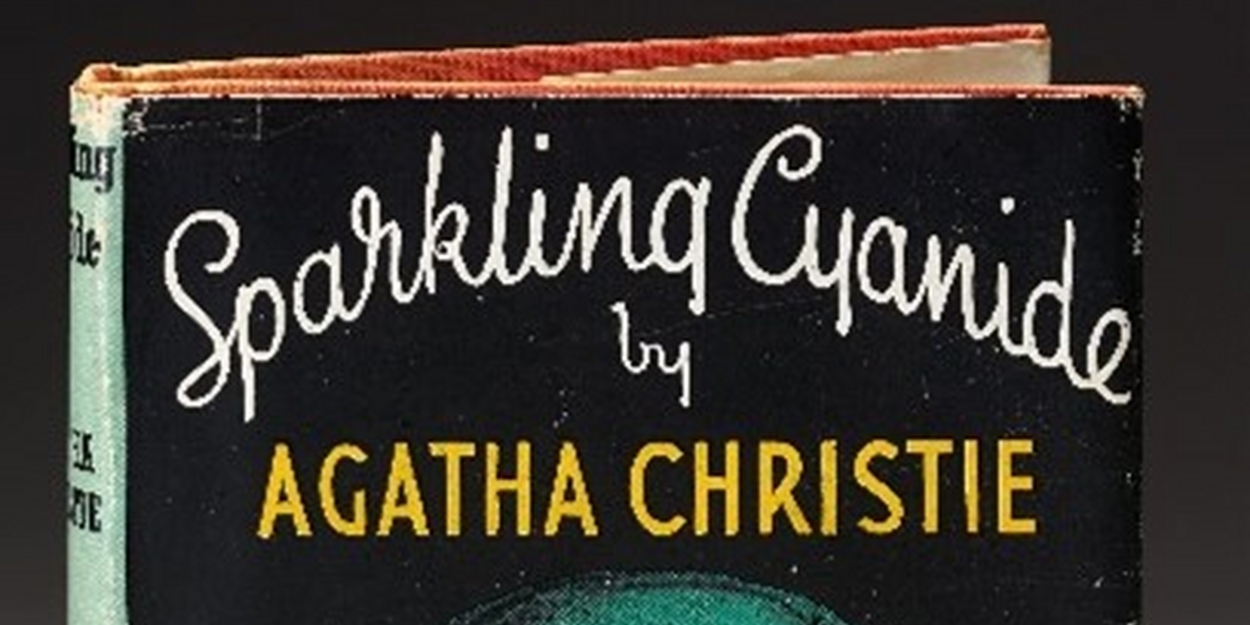Whodunit? Key Books in Detective Fiction on View at The Grolier Club Next Month
The Grolier Club will host related free public programs, including lunchtime exhibition tours and more!

The Grolier Club unravels the history of detective literature in the new exhibition Whodunit? Key Books in Detective Fiction, on view from November 30, 2023, through February 10, 2024. Featuring selections from Grolier Club member Jeffrey Johnson’s collection of detective novels from the nineteenth and early twentieth century, Whodunit highlights more than 90 early examples dating from 1824 to 1985 of the sources, heavily fictionalized memoirs, and first appearances of now beloved fictional detectives in the works of Francois Vidocq, Edgar Allan Poe, Charles Dickens, Wilkie Collins, Anna Katherine Green, Arthur Conan Doyle, and Agatha Christie.
“Since its inception, detective fiction has played second fiddle to literature and has been seen as light or non-serious reading, a sort of earthbound cousin to science fiction,” said Johnson. “It has also been extremely popular. That many of our greatest writers have written detective fiction is often overlooked. So is the fact that the best of detective fiction combines good writing with a puzzle that must be solved.”
Rare highlights on display in the Grolier Club’s second floor gallery include a four-volume set of the Newgate Calendar (1824), a sensationalist publication detailing criminal activity; the first American edition of The Memoirs of Francois Vidocq (1834), the world’s “first” detective; the first collection of Sherlock Holmes stories (1892); Agatha Christie’s first novel (1920), with the first appearance of Hercule Poirot; and detective novels of those not normally associated with the genre such as Eden Phillpotts, Aldous Huxley, William Faulkner, and Gypsy Rose Lee.
Exhibition Highlights
In the early nineteenth century, printing became less expensive and the public’s thirst for sensation spurred publication of several supposedly “true crime” memoirs and collections. On view is one of the first and the most important detective “memoirs,” Recollections of a Detective Police Officer (“Waters” [William Russell]. London: J. & C. Brown, 1856) printed in “yellow-back” form—cheaply made editions with striking covers, typically sold at railway bookstalls. Also on view is Confessions, Trials, and Biographical Sketches of the Most Cold Blooded Murderers ([Anonymous]. Boston: George N. Thomson and E. Littlefield, 1839), featuring detailed drawings of crimes.
Works on view by literary legends Edgar Allan Poe (“The Father of the Detective Story”), Charles Dickens, and Wilkie Collins showcase their influence on the development of the detective novel. Highlights include a facsimile of the manuscript of Poe’s The Murders in the Rue Morgue (Philadelphia: George Barrie, [1895]), the story credited with creating this new genre of literature; an original serialized version of Dickens’ The Mystery of Edwin Drood ([in parts]. London: Chapman and Hall, April–September, 1870), an unfinished mystery that has spawned countless proposed solutions; and the first American edition of The Moonstone (New York: Harper & Brothers, 1868), an extraordinary success with four separate editions published in the same timeframe in the United States alone.
Other iconic works on view in the exhibition feature striking covers, such as the first edition in book form of Arthur Conan Doyle’s Sherlock Holmes novel The Hound of the Baskervilles (London: George Newnes, 1902), with a bold red cover, embossed with gold swirls and a silhouette of the menacing hound. The dust jacket of Agatha Christie’s Sparkling Cyanide (London: Collins for The Crime Club, 1945) features a ghostly green skull lurking behind a festive glass of champagne.
The Grolier Club will host related free public programs, including lunchtime exhibition tours on Tuesday, December 19, 1-2pm; Tuesday, January 23, 1-2pm; and Wednesday, February 7, 1-2pm. A Virtual Tour and Curator Q&A will take place on Monday, February 5, 6-7:30pm. More details can be found at http://grolierclub.eventbrite.com.

Videos

